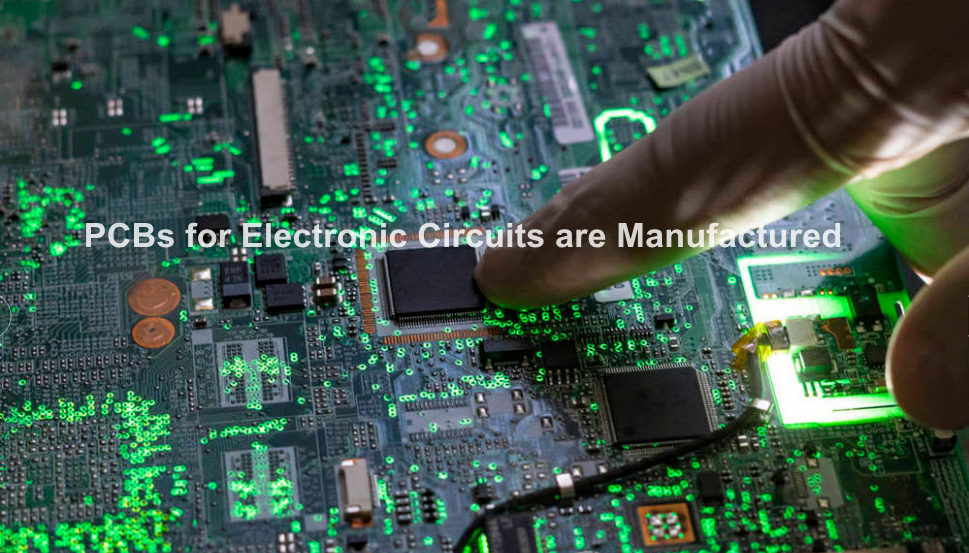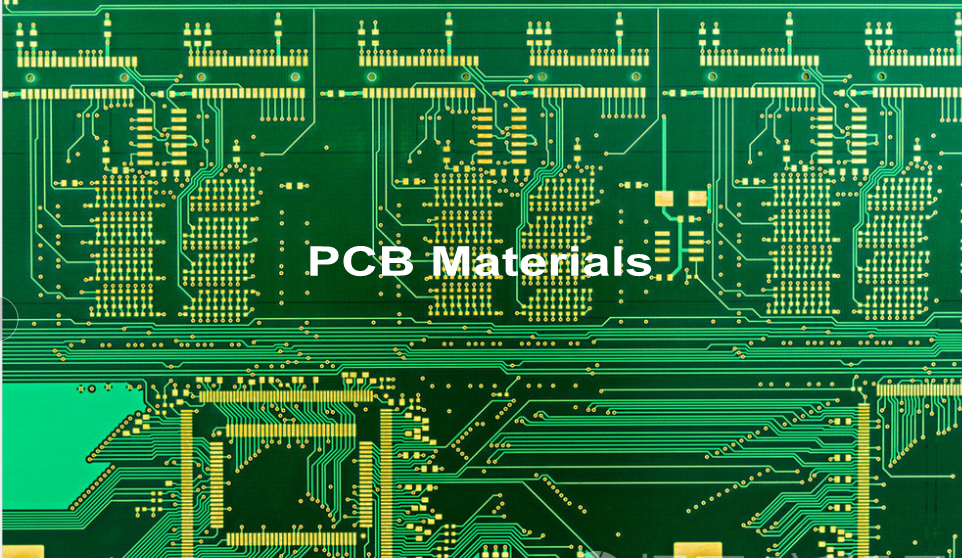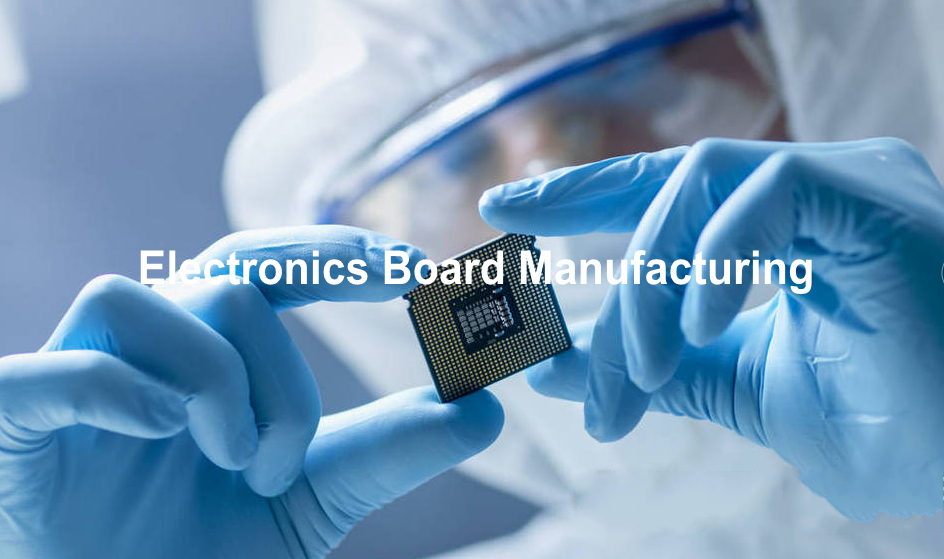Development of PCBs: How PCBs for Electronic Circuits are Manufactured
Manufacturing of PCBs is as essential as the assembly of electronic components on these circuit boarde.
Printed Circuit boards or simply PCBs are the foundation of electronic circuits. It is possible to produce PCBs in a variety of ways. PCB manufacturing technology is progressing rapidly. Electronic circuit boards can now accommodate hundreds of components with an increasing number of layers and reduced track sizes. The PCB design rules are continually evolving to guarantee that the soldering processes used in manufacturing can be handled and adapted for a wide range of electronic parts, primarily for the smaller SMT components.
————————————————————-
Request Electronic Contract Manufacturing Quote, Pls Send PCB File to Sales@raypcb.com Now
————————————————————-
Different Manufacturing Techniques for PCBs
Typically, a chemical etching procedure is used to produce electronic circuit boards such as PCBs. Ferric chloride is the most popular type of etching chemical.
A photographic procedure is used to achieve the right pattern of tracks. Copper is covered with a thin film of photo-resistant on the unprocessed circuit boards. The appropriate tracks are then engraved on the board when the light passes through a photographic film and incidents on the board.
Subsequently, the printed circuit boards are immersed in a ferric chloride solution to strip away the copper from places that do not need any connection tracks. The board is put in the etching solvent for the necessary period considering the strength and thickness of copper on the board.
Alternatively, the copper of PCB boards can be scraped away with special high-precision milling machines. In this method, an instruction file is generated using a PCB design software; this computer file automates the milling process. This PCB development method is not appropriate for large volumes, but it might be an ideal choice in certain circumstances.
In another technique, the etch-resistant ink is printed onto the PCB using silkscreen printing or simply a screen-printing method. Once the circuit design is transferred onto the board’s surface, the extra copper can be etched away using various methods.
Parts of a PCB
Various aspects are considered in manufacturing PCBs. For example, the material of the board, thickness of the board and copper, number of layers, etching technique, etc.
PCB Materials
The PCBs may be manufactured using a variety of materials. The most commonly used material is known as FR4. It is a composite fiberglass material that offers a fair amount of flexibility in a wide range of temperatures. It is a flame-retardant substance, so it is less susceptible to fire. Taking into account the benefits of FR4, it is still relatively cost-effective. For high-frequency applications where the loss is required to be kept to the minimum and the value of dielectric needs to be considered, the PTFE-based PCBs may then be used. However, working with fluorocarbon solids such as PTFE is considerably difficult. For PCBs used in low-cost commercial products, some less costly materials are also available.
A circuit board is made up of a substrate material such as FR4; this circuit board is covered with copper on both sides. The thickness of the copper depends upon the type of application. Copper bonds firmly with FR4 material, but for PTFE material, the bonding process is somewhat complex.

PCB Layers
As dense microprocessors and other boards with thousands of components are built, multilayer boards become necessary because the provision of all requisite connectivity on only two sides of the PCB becomes impossible. Manufacturing process management and consistency demand much more precision for multilayer printed circuit boards.
The boards are created by combining much thinner single sheets. With the rise in the number of layers, each panel needs to become thinner. The board is treated with heat to process the bonding material to fix the various layers together.
If not properly constructed, large multilayer boards may exhibit a particular warp on them. Wrapping can happen if a power or ground plane is located on one of the inner layers where more surface area is without copper.
————————————————————-
Request Electronic Contract Manufacturing Quote, Pls Send PCB File to Sales@raypcb.com Now
————————————————————-
PCB Vias
PCB vias, often called holes, are required to link numerous layers of PCB together at various points. Although the SMT devices are soldered on top of the board surface, holes may also be required to make it easier to install the leaded components on the PCB. Similarly, there are plated through holes that are used to link the power and ground layers with other layers. On the other hand, some holes only exist within the inner layers. These are called blind vias, and they are drilled in the relevant layers before the layers are joined together. Drilling in these complex PCBs is carried out using computer numerical control (CNC) machines.
PCB Soldering and Silk Screen
Once a PCB is soldered, the area not to be soldered must be covered by a sheet of so-called solder resist. Adding this coating helps avoid unnecessary short circuits. The resistant is usually a silicone film that protects the board from solder and other contamination. The solder resist’s color is usually deep green or red. Exposed board areas are traditionally plated with solder substances to allow leaded or SMT components to be soldered to the board easily. Occasionally, for edge connections, gold plating is used. Since the gold doesn’t deteriorate easily, it gives reasonable conductivity and enables good communication at a low cost.
After the initial development process of the board, a silkscreen created by the PCB CAD software is used for applying various markings on the board surface. These markings include instructional texts, component labels, and symbols and logos, etc. These markings assist in defining the board and mark the location of the parts to help locate faults.

PCB Prototype
The production phase of PCBs is an integral part of electronics manufacturing. It is usually best to create a sample before committing to full production as part of the manufacturing phase. A PCB prototype needs to be developed carefully before commencing full-scale production. The prototype specifications must remain as similar as possible to the final PCB product to ensure that minimal modifications are required at the end.
Things to Consider in PCB Manufacturing
When looking for the manufacturer for your PCB design, you should make sure that the maker is consistent in the quality it delivers. Look for online reviews as they can help a lot in many cases. Some aspects to consider before choosing the PCB manufacturer are listed below.
The final PCB board is manufactured according to the design specification, and there are no errors. The board is of the proper size, as specified in the design file. If a PCB has multiple layers, then the holes and vias are accurately drilled through all layers. Make sure that the PCB boards pass the bare board test, this test checks for the continuity of the tracks before the soldering of the components. Ensure that the board has minimum warping or bending even though some wrapping may be attributed to the board’s inherent design. Make sure that the quality of the manufacturing remains consistent and does not decline after the initial order.
An electronic equipment vendor must ensure that a PCB manufacturer is compliant with the points mentioned earlier because a single error in PCB may destroy the equipment and even jeopardize the vendor’s business.
Additionally, look out for brokers. Many brokers are often disguised as PCB suppliers who simply act as a middleman between the company and the client. In most cases, the quality of orders booked through the brokers is not guaranteed. However, certain brokers may secure a profitable order, but in general, the safest thing to do is to deal with the manufacturer directly.
————————————————————-
Request Electronic Contract Manufacturing Quote, Pls Send PCB File to Sales@raypcb.com Now
————————————————————-
Design According to Requirements
It is an excellent practice to make the design requirement checklist. The first concern is whether the PCB Manufacturers can comply with the requirements. In essence, the manufacturer should accept a wide variety of format files. It should be able to produce a board with the desired specifications, For example, the number of layers, type of substrate material for the board, the quality of the copper, the clearance between the tracks, tolerances, etc.
Cooperative and Responsive
The responsiveness of a manufacturer is a factor of utmost importance. The company should be willing to collaborate and to develop a partnership. Proper communication is critical in ensuring that the product is designed correctly. If a PCB manufacturer deals with PCB assembly as well as PCB design, then the whole production process can be accelerated because everything can be done in one place. In a cooperative partnership, conflicts can be addressed quickly, input on the systems and productivity can be given, and in the end, all sides benefit equally.
Cost-Effective
Cost is an essential consideration for PCB manufacturing. The manufacturing cost increases with the increase in the complexity of the PCB design. Cost-cutting is part of effectively producing a PCB, but it must be ensured that the reduction of cost does not affect the quality of the product. Although the lowest price is clearly a significant factor in every decision, we should always balance the cost and quality such that the product is of higher quality while still being relatively cheaper.
Quick Delivery
Occasionally, the production of PCBs is not constrained by time. Still, the majority of PCB assembly firms need PCB boards in a set period of time. Achieving these deadlines is a significant consideration that should be weighed when choosing a PCB producer. Although it is useful to be able to rely on a PCB supplier to follow the deadlines, it is also valuable to have the opportunity to produce the boards faster and deliver them quickly. However, for the faster turnaround, the cost is usually higher. It should be made sure that the turnaround time is not too short because it may also lead to manufacturing defects and various other design mistakes.
Order Quantity
It is reasonable to compare the PCB maker’s capability to the possible volumes of printed circuit boards that need to be delivered. There are various kinds of orders a manufacturer may need to fulfill, for example, an order for a limited amount of test PCBs, an order for a small production run, or an order for a massive number of PCBs with a quick turnaround. It is essential to assess the PCB supplier’s capability to realize the required order. Companies set up to make massive amounts of PCBs for big production runs would not be able to handle small volumes. Conversely, a small corporation usually set up to produce sample PCBs or tiny production quantities could quickly be overloaded by large orders. Selecting the right PCB manufacturer is not always easy. However, it is of vital interest to every PCB assembly or electronics equipment maker.
PCB Testing
Quality PCB manufacturers would inspect the boards rigorously. The manufacturer may test the random samples of the PCBs to check for compliance. If the testing is required, then make sure that the specific producer has the ability to perform different tests. One such test is a bare board test where copper tracks’ continuity is verified before the components’ assembly.
Material Compliance
Some low-priced manufacturers may not have a stringent procurement process, resulting in buying materials from low-cost sources, causing different batches of boards to have inconsistent quality. It is essential for some businesses to know where the raw materials for the manufacturing of PCBs come from and whether or not the rules regulating the use of different dangerous chemicals, such as the usage of lead, mercury, cadmium, and a few other fire-resistant materials are followed. Ensure that the manufacturer supplies PCBs with UL safety compliance certificate and the supplier conforms with the following standards:
Restriction of Hazardous Substances (RoHS)
This legislation has long been in place and controls the usage and acceptable amount of dangerous substances in the electronics produced around the globe.
Registration, Evaluation, and Authorization of Chemicals (REACH)
This European initiative examines the chemicals and materials used for electronics production. Furthermore, the environmental and population-related impacts of these materials are analyzed.
Conflict Materials
For any corporation operating in or providing the United States, this legislation may be of considerable significance. It is a policy that aims to increase visibility in the supply chain of raw materials obtained from conflict areas such as East Congo.

Comments are closed